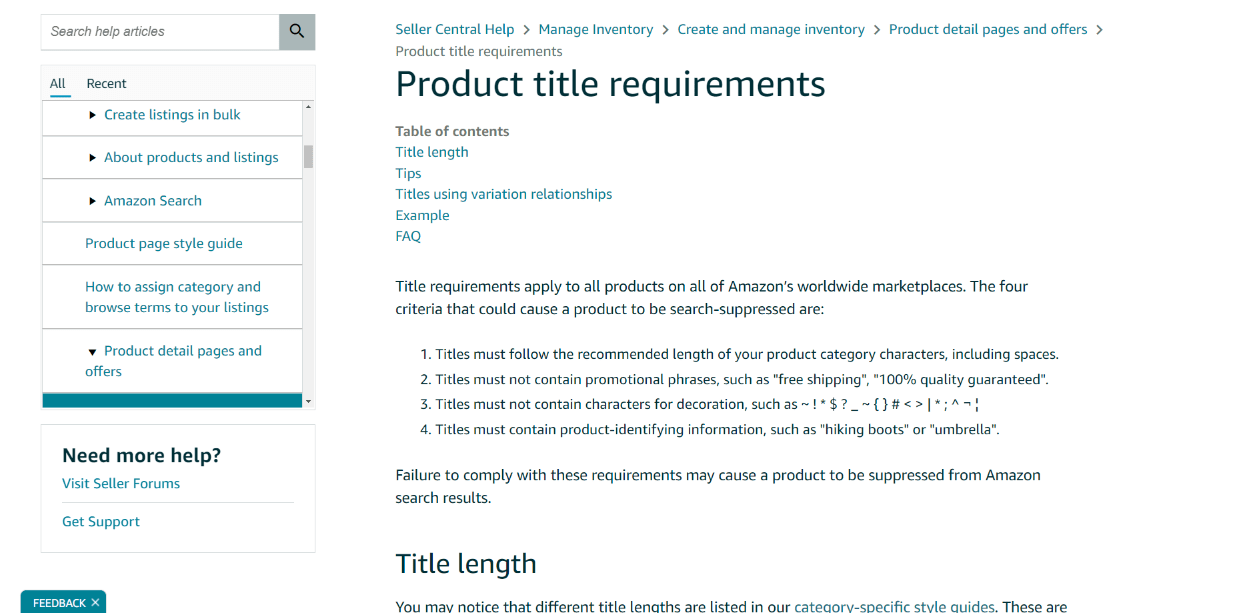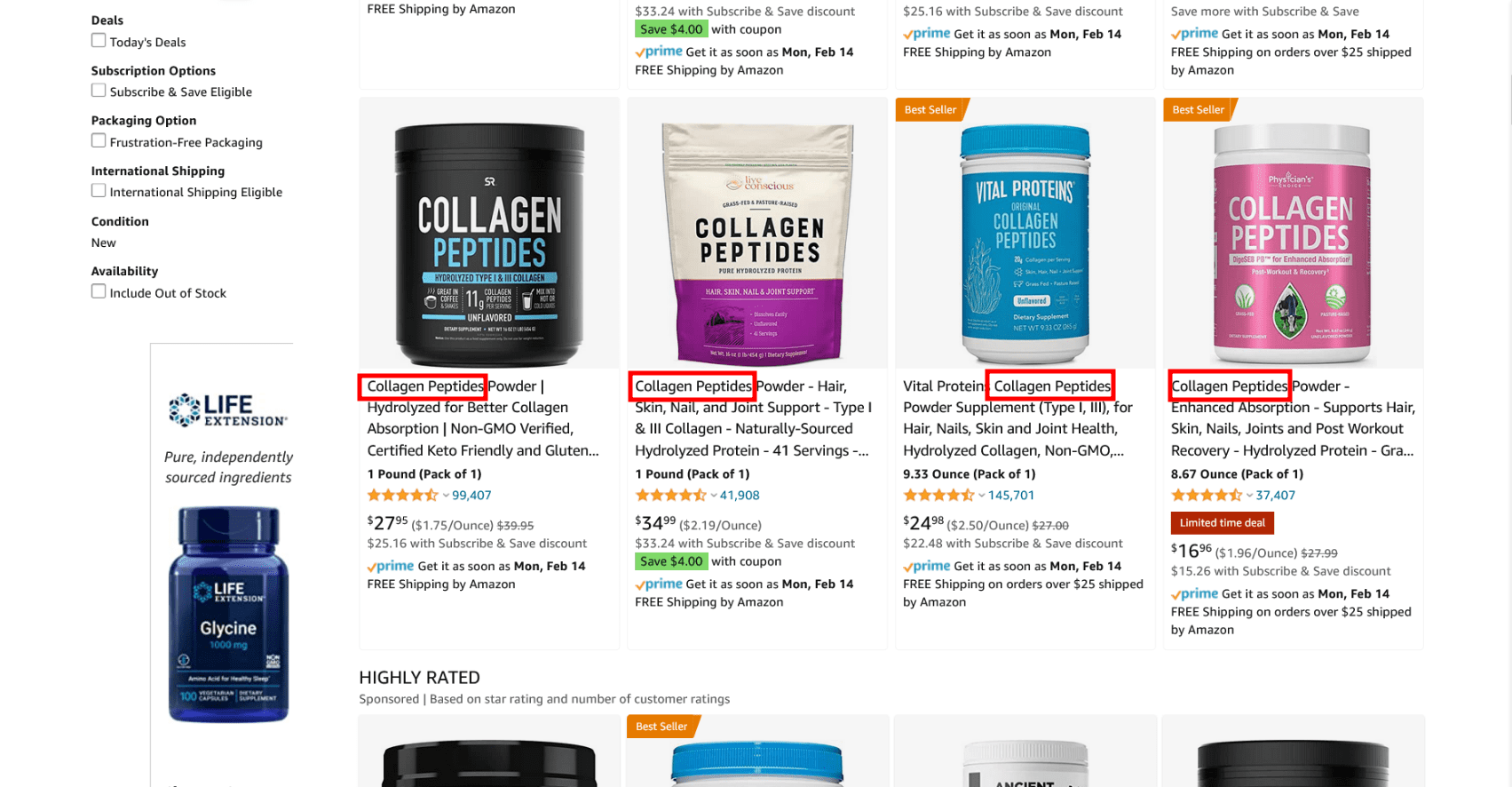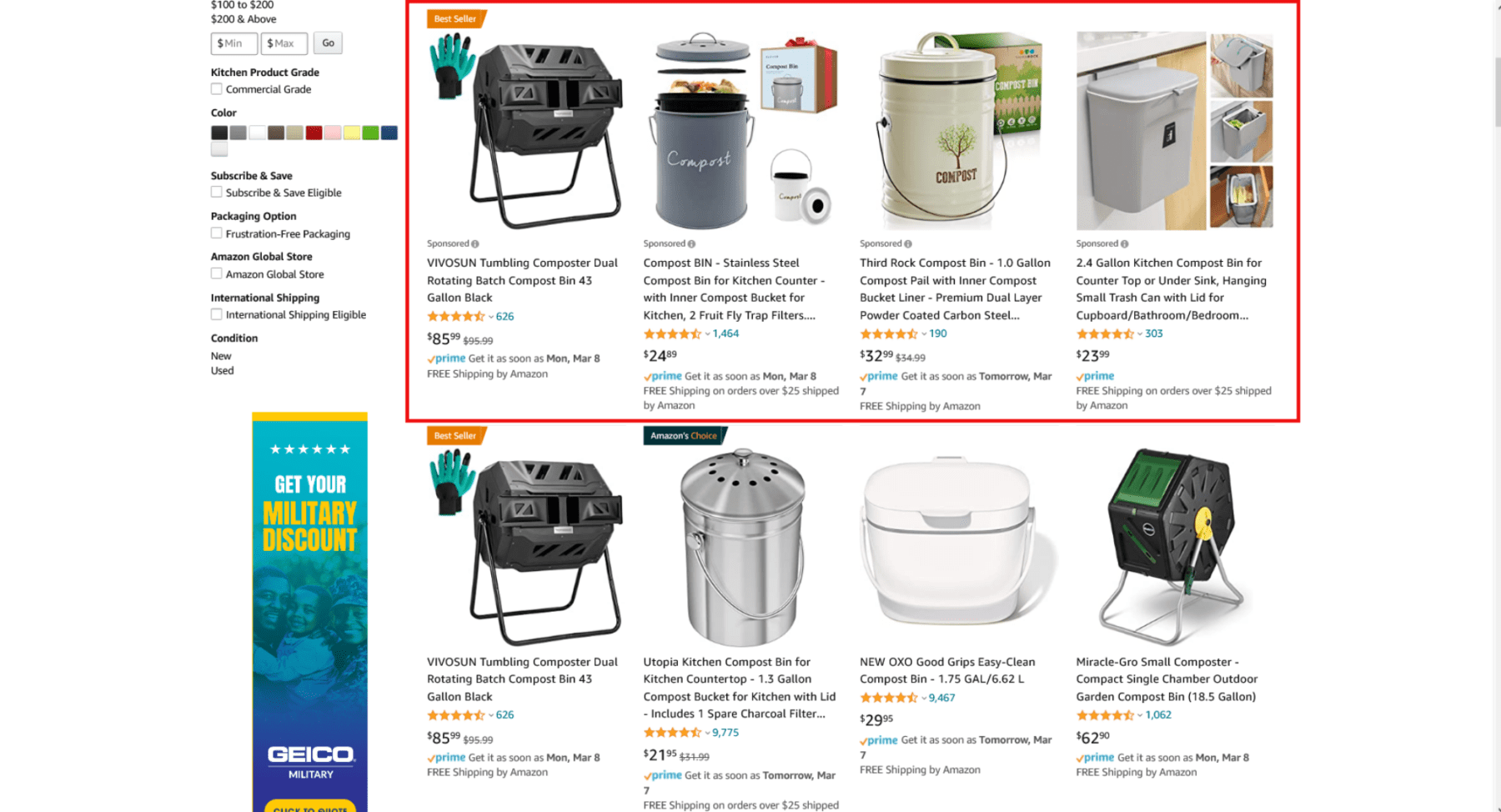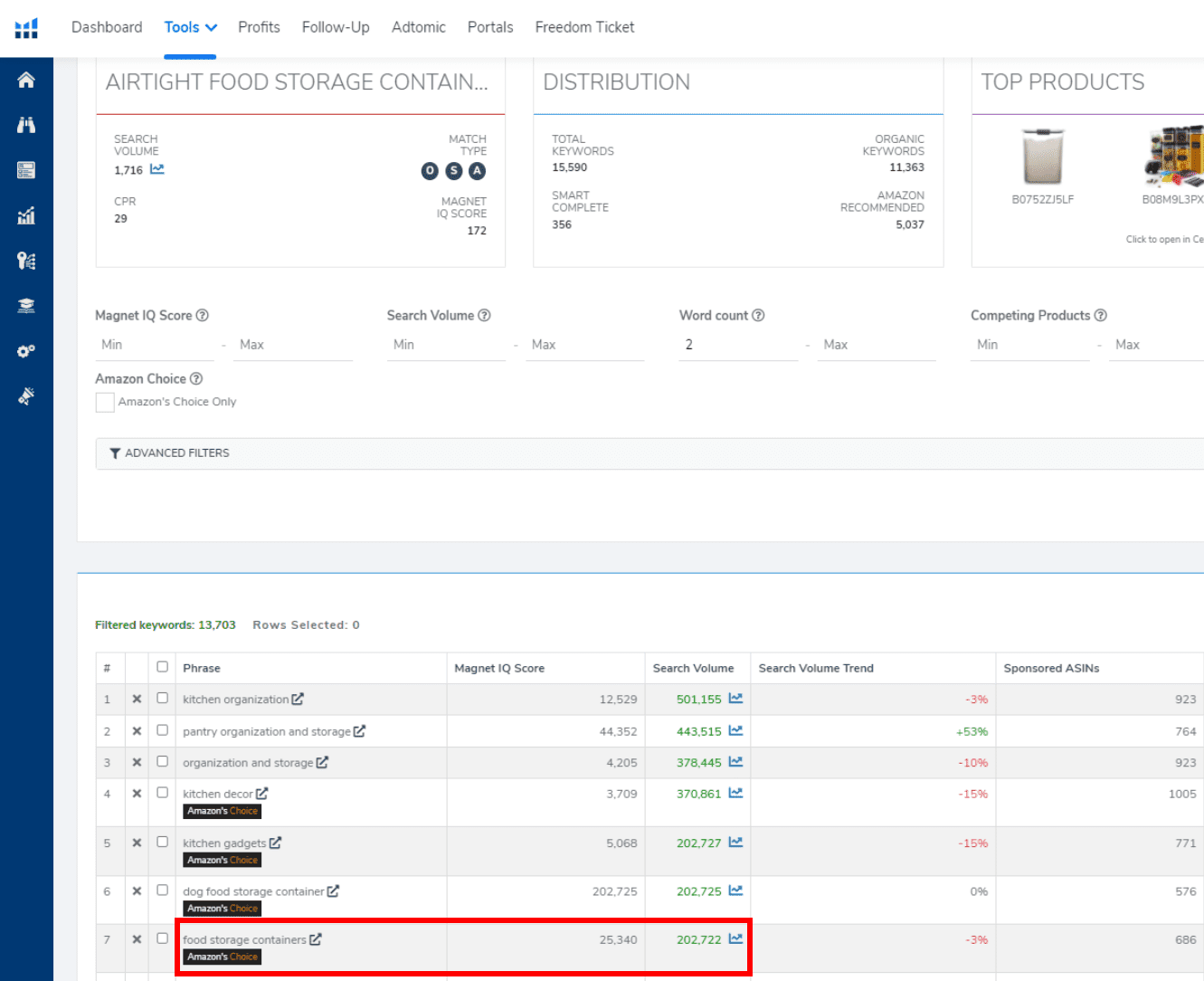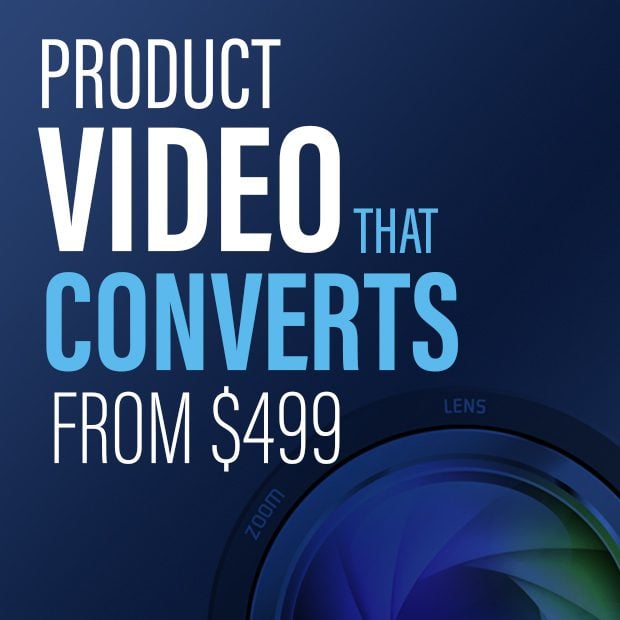Amazon Keyword Research: 7 Tips for Identifying The Best Keywords For Your Product Title

On Amazon, one of the main factors that contribute to frequent sales and greater profit margins is visibility. As the number of fulfillment by Amazon (FBA) sellers increases, and as established product listings continue to grow in dominance, it’s becoming increasingly difficult to get visibility on newer listings without advertising.
While advertising is important, it’s only one piece of the puzzle. Before you start advertising, you need a product listing. And to make sure your product page ranks in the search results, you need the right keywords.
The keywords you put in your product title hold the most weight. Besides the fact that it’s what Amazon’s algorithm prioritizes when determining how to rank your product, It’s also one of the first things customers see.
As you put your product title together, there are a number of factors you want to consider because getting your product title wrong can significantly limit the potential of your listing.
In today’s article, we’re going to cover six best practices for your Amazon product title, including ways to identify the best keywords to use.
Best Practice #1 – Format
The first best practice we’ll cover is the format of your product title. It’s not directly related to keywords per se, but it’s important for readability. Amazon allows up to 200 characters in most product categories, but some categories, such as apparel, only allow 80. With these things in mind, you want to be selective about how you use that space and be sure to follow their product title guidelines.
Here are some general rules of thumb
-
Spell out measurements (e.g., 10 Inches vs. 10″)
-
Title case – Capitalize major words and keep minor words lowercase.
-
Add dashes or a vertical line to separate parts of your title
-
Strive for complete sentences – It’s not always possible to do so, but some sellers try to stuff their title with keywords and it leads to readability issues. It’s also against Amazon’s terms of service.
-
Don’t repeat words unless necessary – you only need to include a word in your title once to index for it.
-
Avoid the following special characters: ~ ! * $ ? _ ~ { } # < > | * ; ^ ¬ ¦
Best Practice #2 – Play By The Algorithm
Like most platforms today, Amazon has a product search algorithm that ranks products for keywords based on the likelihood of purchase.
Amazon doesn’t share how the algorithm works, but with the little information that they do provide, combined with years of experience, third-party sellers have been able to identify some best practices.
One of the first ways the algorithm determines how to rank your product page is whether those keywords are on your listing or metadata at all. If so, you’ve checked the first box.
Keep in mind, the keywords in your product title hold the most weight. It’s even weighted by how early the keywords show up in your product title. The earlier the keyword, the greater the prioritization.
It’s also important to note that on mobile, only about 60-80 characters show for product titles on the search results page. So if there’s some variable about your product that’s important for shoppers to know, include it early.
Another factor that determines if you rank for a keyword is the clickthrough rate on your product page—i.e., how many people who search for the keyword end up clicking on your page. This indicates that your product is relevant for the search.
The algorithm also looks for the conversion rate of your product. If a lot of shoppers end up purchasing after searching for a keyword, then you’ll rank higher.
Now, it’s important to note that the calculations behind the algorithm evolve, but over the years, the factors we just discussed have remained stable.
Best Practice #3 – Product Identification
Once you’ve identified your main keyword, you want to make sure your product title has the keywords that tell shoppers exactly what your product is.
If you try to throw additional keywords in your product title in an attempt to rank for those words, it will likely work against you. For one, shoppers aren’t going to know what you’re offering, but two, it’ll hurt your conversion rate. You’ll get clicks, but then visitors won’t purchase because your product wasn’t relevant to their needs.
On the other hand, if your title was descriptive, you’ll increase your listing visitor conversion rate because the shopper was able to determine your product matched their needs before clicking on your page.
For instance, if you sold a fake plant that should only be used indoors, include it in your product title. Don’t wait for the shopper to find out when they click through to your listing.
Some things you might include in your product title include:
-
Color
-
Size
-
Quantity
-
Dimensions
-
Model
-
Shape
Best Practice #4 – Amazon PPC
Amazon Pay Per Click Advertising (PPC) is one of the best ways to dial in the keywords on your listing.
With Amazon PPC, you bid to show up on the search results for keywords.
You can either select those keywords, called manual targeting, or you can allow Amazon’s advertising algorithm to determine which search results to show your listing on. It’s often helpful to start with automatic keyword targeting because Amazon can find keywords that you may have never thought of.
When your ads have been running for some time and you pull the data, you’ll be able to see which keywords converted the best. And just as important, which keywords may have a high clickthrough rate, but convert the least.
Best Practice #5 – Call Out Your Audience
One great way to use keywords in your product title is to call out your audience. If your product is for Vegans, moms, husbands, or firefighters, call that out.
Similarly, if you have a product that’s traditionally for a male audience, but you want to market to women, include it in your title, “For Men and Women.”
A small addition like that can increase your sales because it’s inclusive. On the other hand, if your product is for men, specifically saying “For Men” or “For Women,” can also help increase conversions because it makes your product feel more exclusive.
Best Practice #6 – Search Volume
Search volume is an important factor to consider when selecting your keywords. That’s how you determine how competitive a keyword is. A keyword may be relevant, but if there are a lot of products with hundreds or thousands of reviews on the search results page, it’s going to be hard to rank for that keyword right away. It’s usually best to try to target smaller-search-volume, relevant keywords first, then make your way up to the high search volume words.
Amazon keyword research tools like Jungle Scout and Helium10 make identifying the search volume for keywords easy.
Best Practice #7 – Competing Product Pages
Finally, one place you don’t want to overlook is your competitors’ pages. Your competition may have more time on Amazon than you and they’ve spent the ad dollars to see which keywords convert the best for them. As such, take a look at competing product pages to see what keywords they’re using in their product title or elsewhere. There may be keywords that are alternative words to call your product that you might find are easier to rank for.
For example, if you sold a backpack, you might notice that a competing listing has the words, pack, sack, luggage, everyday carry, messenger, etc. Those are all words that may be alternatives to the word backpack. The search volume may be smaller, but you have a higher chance of ranking on the first page for that keyword.
Another way to use competing product pages is to look at the reviews that are three stars and below and see if there’s a common feature that shoppers are looking for that competing products don’t have. You can capitalize on that by including the fact that your product does have it in your product title.
For example, if shoppers were disappointed that a best-selling competing product didn’t have a water bottle holder, but your product does, you might include in your title “with Water Bottle Holder.”
Wrapping Up
Keywords are one of the most important factors for ranking higher in the search results so you get consistent sales and reduce your ad spend. But keep in mind, Amazon product listing optimization is an evolving process. Update your product title as you learn more about the keywords that most resonate with your target audience. Use the seven best practices we covered in this article, along with your marketing reports and advertising reports in Seller Central to help direct your keyword strategy.
Happy Selling,
The Page.One Team
The Last Word:
With the increased competition on Amazon, it’s much more important to be clear with your product keywords than it is to be clever (i.e., forcing semi-relevant keywords into your title). You can get short-term results with cleverness, but for longevity and a better customer experience, focus on making your product title clear.

